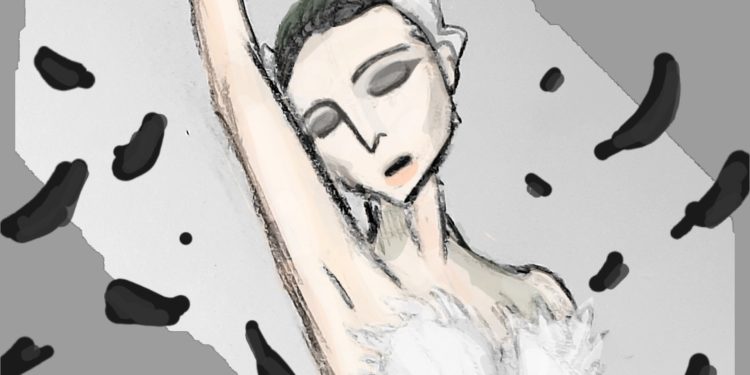By Sarah Plummer
This film review is an opinion piece submitted to the Samford Crimson.
Spiraling from pirouettes into neurotic perfectionism, Natalie Portman dances across the screen as troubled ballerina Nina Sayers, dazzling audiences in Darren Aronofsky’s cautionary tale, “Black Swan.”
Starved for perfection and praise, Nina greets audiences as the model ballerina, allowing herself to be cut and crafted into both the perfect daughter and the perfect student. Her personality, however, is a cavernous shell, gouged out by both the authority figures in her life and by herself. Surrounded by mirrors, the meek and mild Nina is both literally and figuratively terrified of her own reflection, a metaphor for her debilitating perfectionism.
When Thomas Leroy (Vincent Cassel) announces an audition for the swan queen in “Swan Lake,” Nina is desperate to prove herself worthy of embodying both the innocence of the white swan and the sexuality of the black swan. However, her perfectionism will not allow her to express the black swan’s bold seduction. Still, Thomas demands that Nina dance as the swan queen, convinced that she has a black swan inside her, desperate to come out on stage.
Nina’s casting as the swan queen (and also as Thomas’s new toy) introduces a rival in the character of Beth Macintyre (Winona Ryder), Thomas’ previous plaything. In her desperation to please Thomas, Nina ignores the exemplified warning that Beth provides as the traumatized perfectionist.
As the show draws closer, Nina struggles with jealousy for her rival, Odile (Mila Kunis), who embodies the characteristics of the black swan perfectly. As Nina grapples with her growing paranoia and perfectionism, the film hurtles towards a thrilling conclusion that will leave audiences questioning the film’s waning boundary between fiction and reality. Dancing towards her darker fantasies, Nina struggles to reconcile the black and white swans within herself.
Natalie Portman balances the pristine perfection of the white swan with the visceral fracturing of Nina’s mind. Due to her ballet training, she masters the precision necessary for a ballerina while also slowly creating a breakdown of her perfect image. She effortlessly portrays the frail femininity of Nina while also managing to develop the threatening aura of the black swan.
The film’s monochrome palette creates a beautiful mise-en-scene fitting of the black versus white theme of “Swan Lake.” Throughout the film, there are observable changes in Nina’s physical appearance, such as her hair bun gradually getting messier. Also, Nina stops wearing light pink colors and begins wearing darker colors, signifying her internal transformation into the black swan. In addition to eerie sound effects, the film also takes advantage of sound effects such as flapping wings to create a more lifelike transformation into the black swan.
In addition to thrilling sound effects, director Darren Aronofsky takes advantage of religious symbolism in “Black Swan” as he also does in his thriller, “Pi.” Similarly, Aronofsky’s “Mother!” also features a convoluted ending that leaves audiences questioning, and its symbolism mirrors that in “Black Swan.” In conclusion, Aronofsky has mastered the art of the psychological thriller, overflowing with symbolism and open-ended questions to be interpreted.
In “Black Swan,” Aronofksy succeeds in creating a thrill-inducing story with breath-taking visuals that will keep viewers desperate for the conclusion, while also taking the narrative to another level with religious symbolism. The film serves as a cautionary tale to any dedicated artist as it highlights the dangers of perfectionism. In addition to these warnings, the film succeeds in creating a visceral anxiety all too familiar to the perfectionistic artist. Graphic visuals and chilling sound effects come together to portray the tragic tale of a young artist who loses herself only to gain the illusion of perfection.
Aronofsky’s most recent film, 2022’s “The Whale,” is a psychological thriller which stars Brendan Fraser in a comeback role after the actor spent years out of the public spotlight. The film recieved a five-minute standing ovation at the BFI London Film Festival, and is scheduled for release on Dec. 9, 2022.





